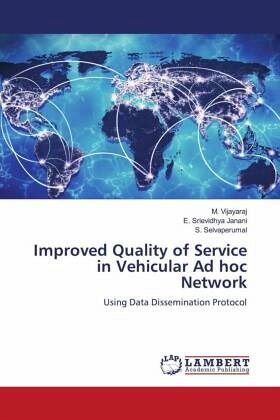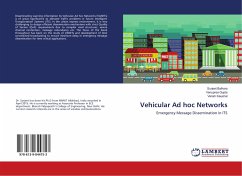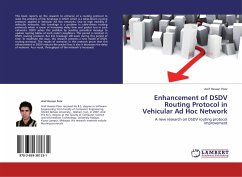
Improved Quality of Service in Vehicular Ad hoc Network
Using Data Dissemination Protocol
Versandkostenfrei!
Versandfertig in 6-10 Tagen
53,99 €
inkl. MwSt.

PAYBACK Punkte
27 °P sammeln!
In recent years, Vehicular ad hoc networks (VANETs) are considered by many researchers since they show wider applications in many areas like Intelligent Transport Systems (ITS), Passenger safety, and emergency scenarios. VANETs are a kind of Mobile Ad Hoc Networks (MANETs) with high mobility, but the nodes move over limited places. Due to high mobility, network topology becomes dynamic. This work is proposed by dividing it into two stages. The first stage is dynamic speed adaptive classified (d-sac) data dissemination protocol for improving autonomous robot performance in VANETs. Here, the pro...
In recent years, Vehicular ad hoc networks (VANETs) are considered by many researchers since they show wider applications in many areas like Intelligent Transport Systems (ITS), Passenger safety, and emergency scenarios. VANETs are a kind of Mobile Ad Hoc Networks (MANETs) with high mobility, but the nodes move over limited places. Due to high mobility, network topology becomes dynamic. This work is proposed by dividing it into two stages. The first stage is dynamic speed adaptive classified (d-sac) data dissemination protocol for improving autonomous robot performance in VANETs. Here, the proposed novel protocol is designed and developed for improving the performance of VANET at mobility architecture levels. The second Stage is a multi-parametric route selection algorithm for delay minimization.












